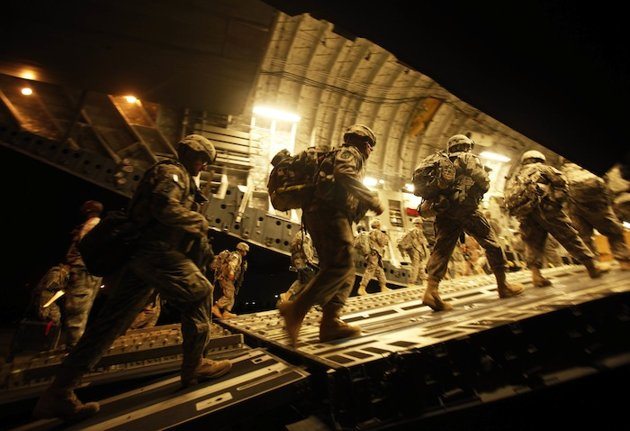In his own words, the G-8 reiterated what the secretary of the Army and chief of staff have both said about downsizing Soldier levels to under 450,000 — “even at 450, it’s a high risk for the mission sets and mission tasks that have been given to us.”
Presently, the Army has about 564,000 Soldiers on active duty, but that number has been mandated to come down to 490,000 by 2015.
“We’re on a glide path, and the monies are laid out to give us a 420,000 Army by 2019,” said Lt. Gen. James O. Barclay III, the Army’s deputy chief of staff, G-8. “That doesn’t mean we’re set on going to 420, we’ve got some decision points built in, coming into the ’16, ’17 timeframe, so we’re taking a hard look at what is the right set.”
What leadership is looking at with regard to manning is how the Army will look across the force; from the brigade combat teams, enablers, the engineer forces, reconnaissance and clearance forces and how the mix is worked, Barclay said. He added BCTs will come down to 32 made up of three battalions.
Addressing the Army’s overall shape at the Association of the U.S. Army’s Aviation Symposium & Exposition, Jan. 15, in Arlington, Va., Barclay didn’t specifically focus on the Army aviation community, but rather on what he called the three-legged stool of readiness, modernization and force structure.
“The bottom line of all this is that over the next five years, the Army is going to have a significant challenge to be able to balance our end-strength, our modernization, and then maintain the readiness of the force we keep,” he said. “With the challenges we’re facing today, it’s going to take an innovative approach to how we’re solving the problems and issues.”
On the readiness side, Barclay said there was a fear of returning to tiered readiness, it’s something leadership does not want to do as an Army because it would create an Army of “haves” and “have nots.” The goal, he said, was to have an Army that can be flexible and adaptive, and can be backed up by pushing resources very quickly and be ready to do mission sets.
“On the modernization side, 2014-2019, we’re looking at incremental improvements across different systems and programs and how we’re going to invest in science and technology and get after the joint military role,” he said, noting the Army didn’t take as large a whack in S&T programs as the Navy and Air Force.
Barclay also said as the Army works through the issues and challenges ahead, it also has to look at the joint nature of a smaller overall force and take into account what’s happening as the other services are also facing cuts.
“If you take a Navy carrier group out, and you take a lot of cruisers and destroyers out all of a sudden they don’t need as many Seahawks,” he said. “That has an impact on the Army’s program.” The SH-60 Seahawk is the Navy version of the UH-60 Black Hawk.
“Same thing with the JLTV, the joint light tactical vehicle, which is an Army and Marine vehicle,” he said. “It can’t be an Army discussion by ourselves; we have to ensure we include the other services for those programs that impact each service, and we have to make sure we protect programs that we need.”
Barclay concluded his address by saying that balance would probably not be achieved until the 2020 to 2022 timeframe.
“By then, we’ll have the decisions on what the final end strengths will be, where we’re going and a clearer picture of really, truly what kind of equipment sets, amounts and quantities will be required and then we’ll also know how much money we’ll have left to put into the readiness piece of that,” he said.










